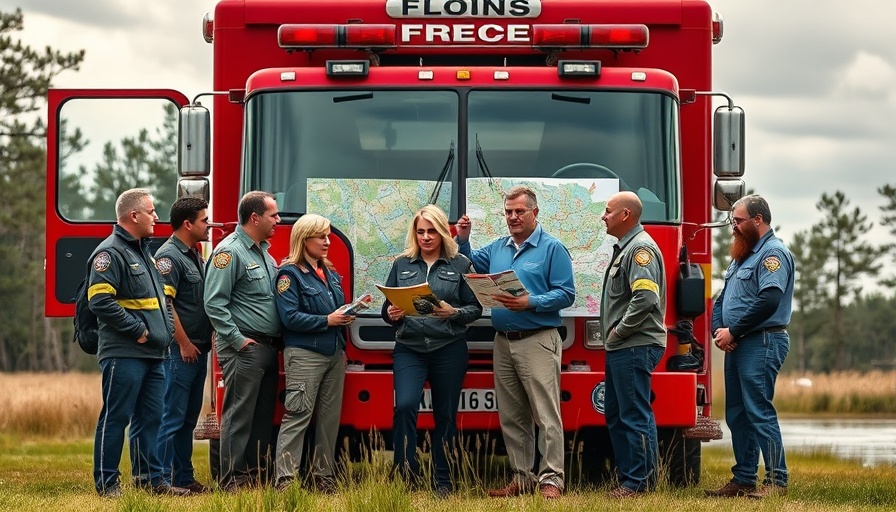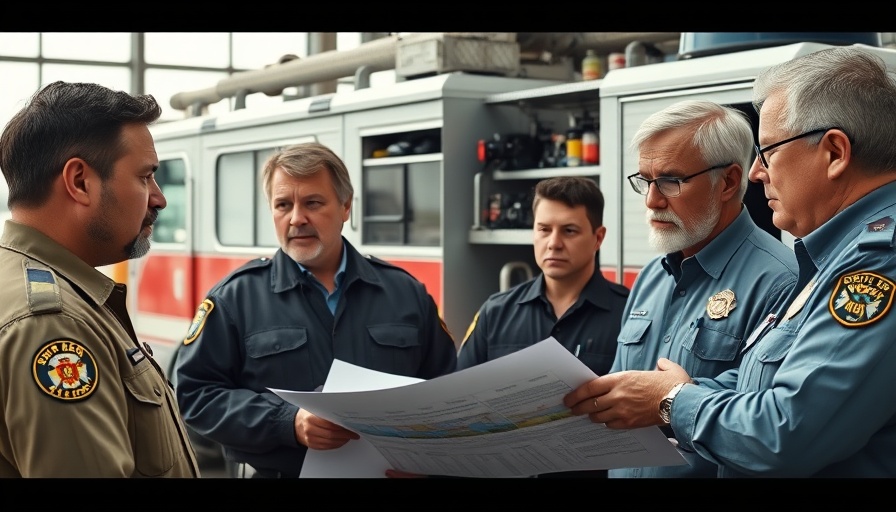
Trump’s Hill Country Visit Sparks Community Reactions
Amid a landscape marked by devastation from recent flooding, President Donald Trump’s visit to the Hill Country serves as a pivotal moment for local residents, government officials, and emergency services. His presence, while providing a sense of solidarity to affected communities, has also drawn scrutiny regarding the federal response during this crisis. Houston metro residents and families in surrounding areas are keenly watching how leadership addresses both the immediate needs and longer-term recovery from this disaster.
Understanding the Community's Sentiment
In the wake of natural disasters, community resilience often shines through. Residents from areas such as Bellaire, Meyerland, and Montgomery County have come together to extend support to those impacted by flooding. Local volunteers have organized drives to gather supplies, demonstrating the strength of community bonds. This spirit of togetherness underscores an important aspect of recovery – collective action. Texas citizens are now reflecting on how effectively governmental responses align with the unique needs of those affected.
Emergency Response Under the Microscope
The immediate response to flood catastrophe has sparked considerable debate. Residents voiced concerns over timely assistance, which was a critical issue highlighted by many during Trump’s visit. Reports suggest that while some areas received help quickly, others experienced delays that left families vulnerable. The discussion has shifted to whether local and federal emergency management systems are adequately funded and equipped to handle increasing weather challenges, especially as Texas faces a future possibly defined by more frequent severe weather.
Connecting Local Issues to National Policies
This flood incident is indicative of a larger dialogue about climate resilience and disaster preparedness strategies from both local governments and federal policies. As Houston navigates this pivotal moment, residents are seeking clarity on what actions are being taken to improve future responses. Information on infrastructure improvements, community safety measures, and funding allocations from state and federal levels have become paramount concerns. The link between local experiences and national policy must be emphasized for comprehensive change.
Looking Ahead: From Crisis to Change
What does the next chapter look like for communities like those in Houston’s metro area? Residents hope to turn the lessons learned from this flooding disaster into advocacy for better emergency preparedness and infrastructure investments. As families rebuild their lives, there exists an opportunity for lasting improvements in public safety initiatives that may prevent future calamities. Local government meetings and community forums are essential platforms where residents can voice their concerns and collaborate on actionable solutions.
How You Can Support Local Recovery Efforts
As residents in the Houston metro area grapple with the aftermath of the floods, proactive involvement can make a significant impact. Consider participating in local community events that raise funds for relief efforts or support local businesses impacted by the disaster. Sharing resources, whether it's a safe space for displaced families or food drives, can create ripple effects of hope and resilience. The very fabric of our communities is built on the interconnectedness that flourishes during times of need.
The visit from President Trump can be seen as a call to action for effective policy changes and a reminder of the unbreakable spirit of Texas communities. It’s a time to galvanize support for fellow residents, advocate for future preparedness, and embody the unity that our cities thrive on. Your voice matters in shaping the narrative of recovery – join the conversation and become part of the positive change.
 Add Row
Add Row  Add
Add 



 Add Row
Add Row  Add
Add 

Write A Comment